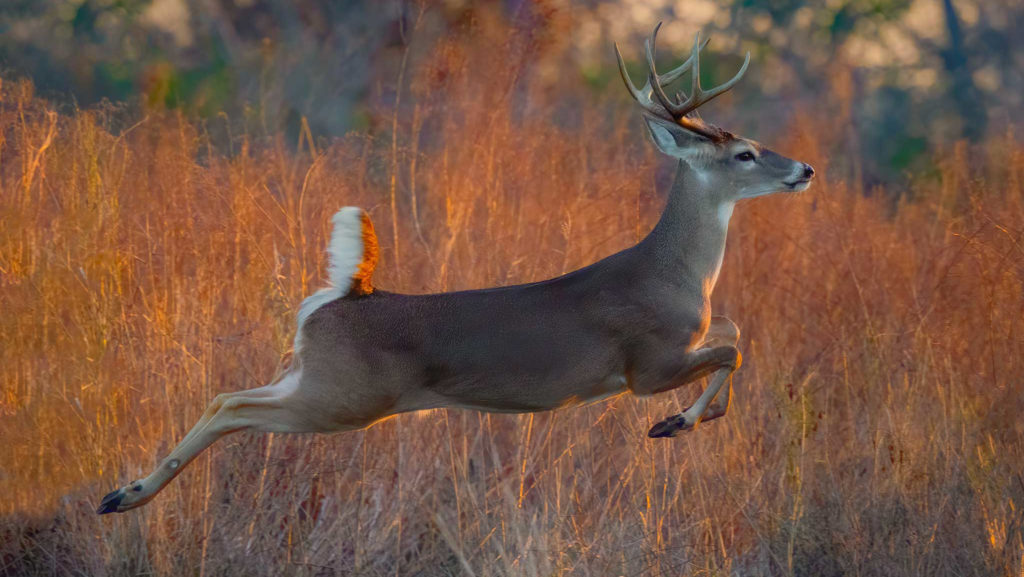
Texas Parks and Wildlife Department (TPWD) biologists predict a fruitful white-tailed deer season in many regions of the state. Although conditions are drying statewide, rains in September helped to create an abundance of quality forbs and shrubs, both of which are critical for providing good deer nutrition.
The general deer season runs from Nov. 7 through Jan. 3, 2021 in the North Zone and Jan. 17, 2021 in the South Zone. A special youth-only gun deer season is set for Oct. 31- Nov. 1 and Jan. 4-17, 2021.
“Hunters in the Edwards Plateau, Cross Timbers and South Texas eco-regions can expect some of the best conditions,” said Alan Cain, the TPWD White-Tailed Deer Program Leader. “If dry conditions persist, hunters could expect to see increased deer activity around feeders or other key food sources.”
The Edwards Plateau in central Texas has the highest deer population in the state with an estimated 2.37 million deer. An anthrax outbreak in 2019 resulted in some mortality events among white-tailed deer, however TPWD biologists suggest such losses provided long-term benefits. By reducing deer densities and bringing populations in line with the natural carrying capacity of the native rangeland, the population reduction should have resulted in healthier deer and more nutrition to help bucks in the area maximize antler production.
The Cross Timbers region in north Texas has the second highest deer population in the state and encompasses five Deer Management Units (DMU) with deer densities ranging from 14 to 88 deer per 1,000 acres. Fawn production in the Cross Timbers has been greater than 50% for the last 8 years and 2020 is expected to be at least average, if not above average, as a result of great range conditions. Hunters should expect to see plentiful numbers of mature bucks this year.
Relatively mild temperatures and beneficial rains this spring set the stage for another good season in South Texas, especially in the eastern half of the region and south towards the Rio Grande Valley. Deer populations in the region are stable with most recent estimates numbering close to 438,000 deer. Hunters looking to pursue mature bucks should consider South Texas as antler quality is expected to be better than average due to good range conditions.
White-tailed deer and mule deer are Chronic Wasting Disease-susceptible animals. As such, prior to hitting the field, hunters should review CWD information to find area testing requirements and carcass movement restrictions in CWD Containment and Surveillance Zones. Texas hunters are reminded to comply with carcass movement restrictions when harvesting deer, elk, moose or other susceptible species in CWD-positive states when transporting harvested animals back home.
Following a successful trip to the field, hunters can enter their deer harvests into the 30th annual Texas Big Game Awards (TBGA). The awards offer categories for first harvests, youth hunters, as well as scholarship opportunities open to any graduating high school senior, entering college freshman, sophomore or junior in an agriculture or natural resources-related degree plan. More information about the TBGA can be found on their website.
Texas hunters can help Texas families by donating their legally harvested and tagged white-tailed or mule deer to participating processors as part of Hunters for the Hungry. Funds donated through the Hunters for the Hungry website or while buying your Texas hunting license can help promote the program and cover the costs of processing donated deer meat that goes to hungry families throughout the state.
For additional late season deer hunting opportunities, county specific regulations and information on how to properly tag and report a harvest, consult the 2020-21 all-digital Outdoor Annual. Hunters now have access to their Texas proof of Hunter Education in the free Outdoor Annual mobile app for iOS and Android. It is required that every hunter in Texas (including out-of-state hunters) born on or after Sept. 2, 1971 successfully complete Hunter Education.
Hunters taking advantage of Texas Public Hunting Lands must also have the Annual Public Hunting Permit. It’s also important for public land hunters to consult the Public Hunting Lands Map Booklet to review regulations that may apply to specific areas. The My Texas Hunt Harvest app can be used to complete on-site registration electronically at a public hunting area.
(Story courtesy of Texas Parks and Wildlife Official Website)